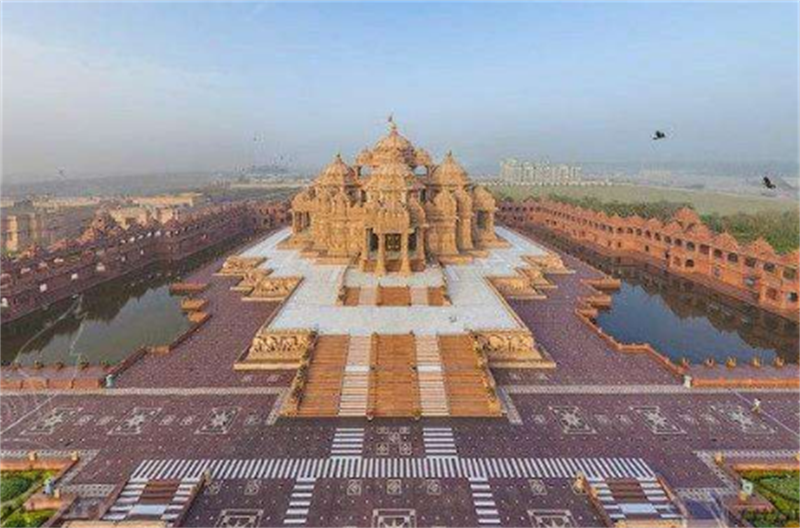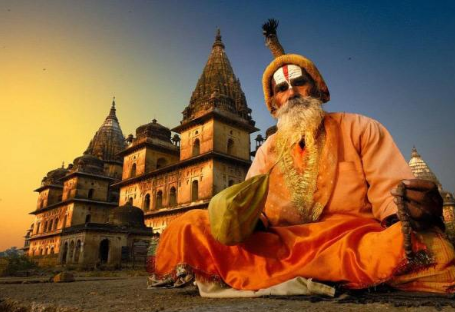

Tour Code: IN7-002
Tour Duration: 7 Days 6 Nights.
Tour Themes:
Tour Route: Delhi-Jaipur-Fategoyr Sujuru-Agra
7 days India Delhi-Jaipur-Fategoyr Sujuru-Agra Tour
You can tailor-make the tour duration, route, themes, and cultural experiences, etc. 7 days India Delhi-Jaipur-Fategoyr Sujuru-Agra TourTour Code: IN071 Departure Date: You Choice! Custom Days: 5.6..12.. Days Tour Route: Delhi-Jaipur-Fategoyr Sujuru-Agra-Delhi (Could Customize)You can always customize a similar tour based on this itinerary. Day 1 Delhi arrivalOvernight at DelhiDay 2 DelhiMorning:Jama masjid, Chandni Chowk, Raj Ghat.Afternoon: Qutab minar, Humayun’s Tomb, India GateOver night at DelhiJama Masjid of Delhi is the largest mosque in India. The Jama Masjid stands across the road in front of the Red Fort. Built between 1644 and 1658, Jama Masjid is one of the last architectural works of the Mughal emperor Shah Jahan. The spacious courtyard of the Jama Masjid holds thousands of faithful. Jama Masjid is located on a mound in the heart of the old city and projects beautifully into the Old-Delhi skyline. Jama Masjid Mosque was built in red sandstone and marble by more than 5000 artisans. Originally called the Masjid-i-Jahan-Numa, or "mosque commanding view of the world", the Jama Masjid stands at the center of the erstwhile capital city of the Mughals, Shahjahanbad.Chandni Chowk as Shopaholic's ParadiseShopping is fun! Shopping is a time-pass!! Whatever might be the reason, Shopping is an ongoing activity that is more or less a hobby for some. Every city has numerous shopping places so as there in Delhi too. The Chandni Chowk is the major attraction for habitual shoppers. After shifting his capital from Agra to Delhi emperor Shahjahan established Chandni Chowk in 1650. It soon became the heart and soul of the commercial activities of Mughal Empire and the legend continues till today. Chandni Chowk is located opposite to the Red fort. The market is far from the conventional airconditioned malls or gorgeous shops with plush interiors in posh markets yet its importance can be boasted of about among wholesale traders. In Mughal era Chandni chowk was famous for the Fountains and the shops.Raj Ghat: India is a country, where you can see a lot of historical places and monuments dedicated to popular historical figures, and the capital city, Delhi,being no less than any other place, offers some of the most popular and beautiful structures in the country. Delhi tourism provides you many brilliant options to be a apart of the splendid history and to gaze at the iconic facts and features of it, Raj Ghat being one of them. It is one of the most important and respected site in the city.Qutub Minar is the pride of Delhi. The tall minaret was constructed in 1192 by Qutab-ud-din Aibak, and later completed by his successor Iltutmish. The soaring conical tower is an exquisite example of Indo-Islamic Afghan architecture.Humayun’s Tomb is the tomb of the Mughal Emperor Humayun. The tomb was commissioned by Humayun's wife Hamida Banu Begum in 1562 AD, and designed by Mirak Mirza Ghiyath, a Persian architect.[1] It was the first garden-tomb on the Indian subcontinent,[2] and is located in Nizamuddin East, Delhi, India, close to the Dina-panah citadel also known as Purana Qila (Old Fort), that Humayun founded in 1533. It was also the first structure to use red sandstone at such a scale[3][4] The tomb was declared a UNESCO World Heritage Site in 1993,[2] and since then has undergone extensive restoration work, which is still underway. Besides the main tomb enclosure of Humayun, several smaller monuments dot the pathway leading up to it, from the main entrance in the West, including one that even pre-dates the main tomb itself, by twenty years; it is the tomb complex of Isa Khan Niyazi, an Afghan noble in Sher Shah Suri's court of the Suri dynasty, who fought against the Mughals, constructed in 1547 CE.The India Gate was built in 1931 and designed by Sir Edwin Lutyens. This 42 m high stone arch of victory, universally known as The India Gate, stands at the eastern end of Rajpath, New Delhi. It was previously officially known as The All India War Memorial. The names of the 90,000 Indian Army soldiers who died in the First World War, Afghan campaign of 1919 and the North-West Frontier operations are inscribed on the walls of this grand structure.Day 3 Delhi-JaipurMorning: After breakfast, car transfer to Jaipur by air-conditioned car (Journey time approx 4hrs & 30 mn).Afternoon: Jaipur, Jantar MantarOvernight at JaipurJaipur: Also called PinkCity. Jaipur has always played a prominent role in the quest for power between the Mughals and the Rajputs. Today it is the capital of Rajasthan. A bustling city full of colour and movement it is today knows for its handicrafts and manual printing on cotton fabrics, which is exported the world overJantar Mantar: an observatory, constructed in the 18th century and the CityPalace, which now houses a Museum.Day 4 JaipurMorning: Car transfer to visit Amber Fort(12 Kms from Jaipur),Afternoon: Sanganer, car transfer back to JaipurOvernight at JaipurAmber Fort: also spelled and pronounced as Amber Fort) is located in Amer (a town with an area of 4 square kilometres (1.5 sq mi)[1]), 11 kilometres (6.8 mi) from Jaipur, Rajasthan state, India. It is one of the principal tourist attractions in the Jaipur area, located high on a hill.[2][3]Amer Fort was built by Raja Man Singh I. Amer Fort is known for its artistic style, blending both Hindu and Rajput elements. With its large ramparts, series of gates and cobbled paths, the fort overlooks the MaotaLake, at its forefront.Sanganer is a village situated 40 km south of Jaipur, the capital of Indian state of Rajasthan. The village is fighting for food and electricity. Also famous for handmade paper industry, textile printing and for Jain temples.Sanganer prints are one of its own kinds, for the reason that patterns in bright colors are always printed on white backgrounds. Sanganeri Hand block printing received the geographical indication (GI) tag in 2010. The handmade paper industry began with the idea of Maharaja Sawai Jai Singh II in 1728. Around 10 handmade paper industries are present in Sanganer. Krishan Lal Balmiki the member of Rajya Sabha, was also from Sanganer (born 10 July 1942,Died 21 April 2010).Day 5 Jaipur-Fategoyr Sujuru-AgraMorning: After breakfast, car transfer to Fatehpur Sikri (Journey time approx 4 Hrs). And then car transfer to Agra (Journey time approx 1 h 15 mn)Overnight at AgraFatehpur Sikri: Built during the second half of the 16th century by the Emperor Akbar, Fatehpur Sikri (the City of Victory) was the capital of the Mughal Empire for only some 10 years. The complex of monuments and temples, all in a uniform architectural style, includes one of the largest mosques in India, the Jama Masjid.Day 6 AgraMorning: Taj Mahal at sunrise, after breakfast visit of FortAfternoon: Itmad-ud-Daulah’s mausoleum, the markets in AgraOvernight at AgraThe Taj Mahal is the epitome of Mughal art and one of the most famous buildings in the world. Yet there have been few serious studies of it and no full analysis of its architecture and meaning. Ebba Koch, an important scholar,has been permitted to take measurements of the complex and has been working on the palaces and gardens of Shah Jahan for thirty years and on the Taj Mahal itself—the tomb of the emperor's wife, Mumtaz Mahal—for a decade.Fort (Emperor Akbar commissioned the construction of this fort in 1565, although additions were continued to be made till the time of his grandson Shah Jahan. The Fort houses some exquisite buildings within like the Moti Masjid, Diwan – e- Am, Diwan – e – Khas, and Sheesh Mahal.)One of the lesser-known monuments of Agra, the tomb of Itimad ud Daulah is sometimes called the 'Baby Taj' because of its resemblance to Agra's most famous monument. However Itmad ud Daulah's Tomb was built before the Taj Mahal. A number of its stylistic features, such as a tomb in white marble surrounded by a formal garden and the use of inlaywork in marble to create floral or geometric designs, inspired similar features of the Taj Mahal. You can see the beautiful tomb of Itmad ud Daulah, on tours to Agra with Agra Hub.The markets in Agra: Your visit to Agra can never be complete without a visit to its fascinating markets. Go on a shopping spree here in this shoppers' paradise. Agra has both traditional markets that have been in the trading business for centuries. The Mughals earned the reputation of being great patrons of arts and crafts. Agra's major handicraft items, besides inlay work, are leatherware, brassware, carpets, jewelry and embroidery work. And, there are the hi-fi mega shopping malls and the state emporiums where you can purchase antique souvenirs to luxury items.Day 7 Agra-Delhi DepartureMorning: After Breakfast, car transfer to Delhi (Journey time approx 4 Hrs), on the way we will visit Sikandra, and then you will be escorted to the airport for your next destinationikandra was built in 1492 by Sikander Lodhi, a ruler of one of the last dynasties of the Delhi Sultanate. Akbar, in his time, ordered the re - construction of Sikandra, this time as a site for his mausoleum but he died before it could be completed. The work was completed by his son Jehangir in 1613. The tomb is a combination of Muslim and Hindu architectural styles. The building of red sandstone is four storeys tall, approximately 31 metres in height. The first three storeys are of red sandstone, while the fourth is entirely of marble.
Tour Code: IN8-001
Tour Duration: 8 Days 7 Nights.
Tour Themes: Luxury, Honeymoon, Senior, Cultural Experience, Culture History, Couple
Tour Route: New Delhi-Dehradun-Rishikesh
8 days New Delhi Dehradun Rishikesh tour
You can tailor-make the tour duration, route, themes, and cultural experiences, etc.Kunjapuri

